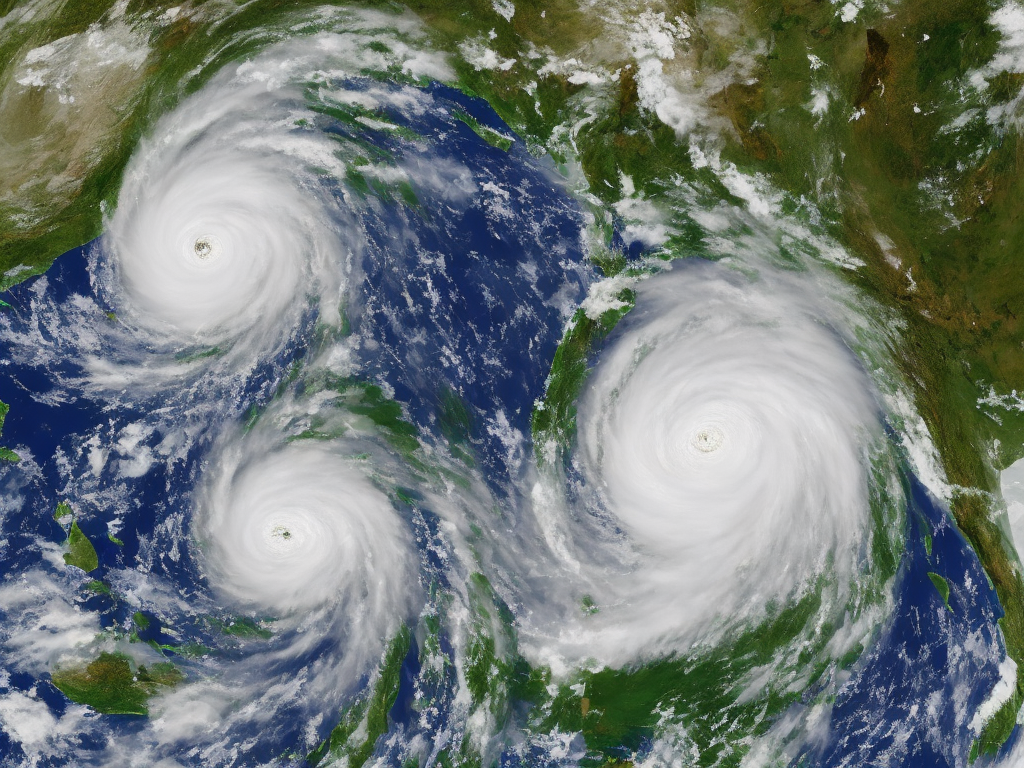
Natural disasters are unexpected events that can occur anytime and anywhere in the world. Tornadoes and cyclones are two commonly known natural disasters that can have a devastating impact on human lives and property. Despite their similarities in appearance and effects, there are significant differences between these two types of storms. This article will discuss the difference between tornado and cyclone in detail.
Tornadoes are small but intense columns of air that rotate violently around a vertical axis. Tornadoes occur when a large thunderstorm formed by warm and moist air causes a change in the wind direction and speed. Tornadoes develop under these conditions when the warm air rises rapidly, forcing cooler air to descend. This creates a updraft of air, which causes the rotating column of air to form a funnel shape. Tornadoes travel at speeds between 40-110 mph and have a lifespan of minutes to hours.
Tornadoes are classified on the Enhanced Fujita Scale (EF Scale) - a scale that measures the strength of a tornado based on the damage it causes. The EF Scale ranges from EF0 to EF5. An EF0 tornado causes minimal damage, whereas an EF5 tornado causes catastrophic damage. EF5 tornadoes can destroy an entire town, homes, and other structures. They can also cause severe injuries or death.
Cyclones, on the other hand, are a broader term used to describe any weather system with a low-pressure center, which is responsible for creating strong winds and heavy rainfall. Cyclones can range in size from a few hundred kilometers in diameter to a size that covers an entire continent. Cyclones are named based on their location and the direction they travel. For example, hurricanes are cyclones that form in the Atlantic, Northeast Pacific, and also in the South Pacific and Indian Oceans. Typhoons are cyclones that form in the Northwest Pacific. Tropical cyclones are formed in the South Pacific and Indian Oceans.
Cyclones are classified based on their wind speed. The Saffir-Simpson Hurricane Wind Scale is used to measure the intensity of a cyclone based on wind speed. The scale ranges from Category 1 to 5. A Category 1 cyclone has wind speeds of 74-95 mph, whereas a Category 5 cyclone has wind speeds of over 157 mph. Cyclones can cause storm surges, which occur when strong winds push seawater onshore, causing flooding in coastal areas. They can also cause landslides and flash floods due to heavy rainfall.
One of the primary differences between tornadoes and cyclones is their size. Tornadoes are much smaller than cyclones, with a diameter that ranges between 50-500 meters. Whereas, cyclones can vary significantly in size, as they can cover a few hundred kilometers up to a continent.
Another difference is the destruction caused by these two natural disasters. Tornadoes are very destructive but only in a small area, whereas cyclones can cause damage over vast areas. Cyclones cause great damage in the form of storm surges, high winds, and flooding. On the other hand, tornadoes create a narrow path of destruction traveling anywhere from a few hundred meters to tens of kilometers.
The duration of these disasters also differs significantly. Tornadoes are not only smaller in size but also have a shorter lifespan, which ranges between a few minutes to an hour. Whereas cyclones can last for several days, causing damage to a large area and affecting thousands of people.
Cyclones also have a far greater impact on human lives than tornadoes. This is because cyclones can be predicted several days in advance, allowing for evacuation plans to be created and put in place. In contrast, tornadoes can develop in just a few minutes, making it impossible to evacuate people in time.
Lastly, tornadoes are more common in the United States, whereas cyclones are more prevalent in tropical regions worldwide. The United States has several tornado-prone regions such as Oklahoma and Kansas. In contrast, countries in the tropics such as the Philippines, China, Japan, India, and Australia are more prone to cyclones.
In conclusion, tornadoes and cyclones are two of the most dangerous natural disasters that can cause significant damage to human life, property, and the environment. Although they share some similarities in terms of appearance and destruction, there are significant differences between the two. Tornadoes are smaller in size, typically last for a shorter period, and mainly occur in the United States. Cyclones, on the other hand, are larger in size, last longer, and occur mostly in tropical regions worldwide. Understanding these differences is important in preparing for these natural disasters, learning how to minimize risks, and responding effectively where necessary.
 Self-Instruct
Self-Instruct